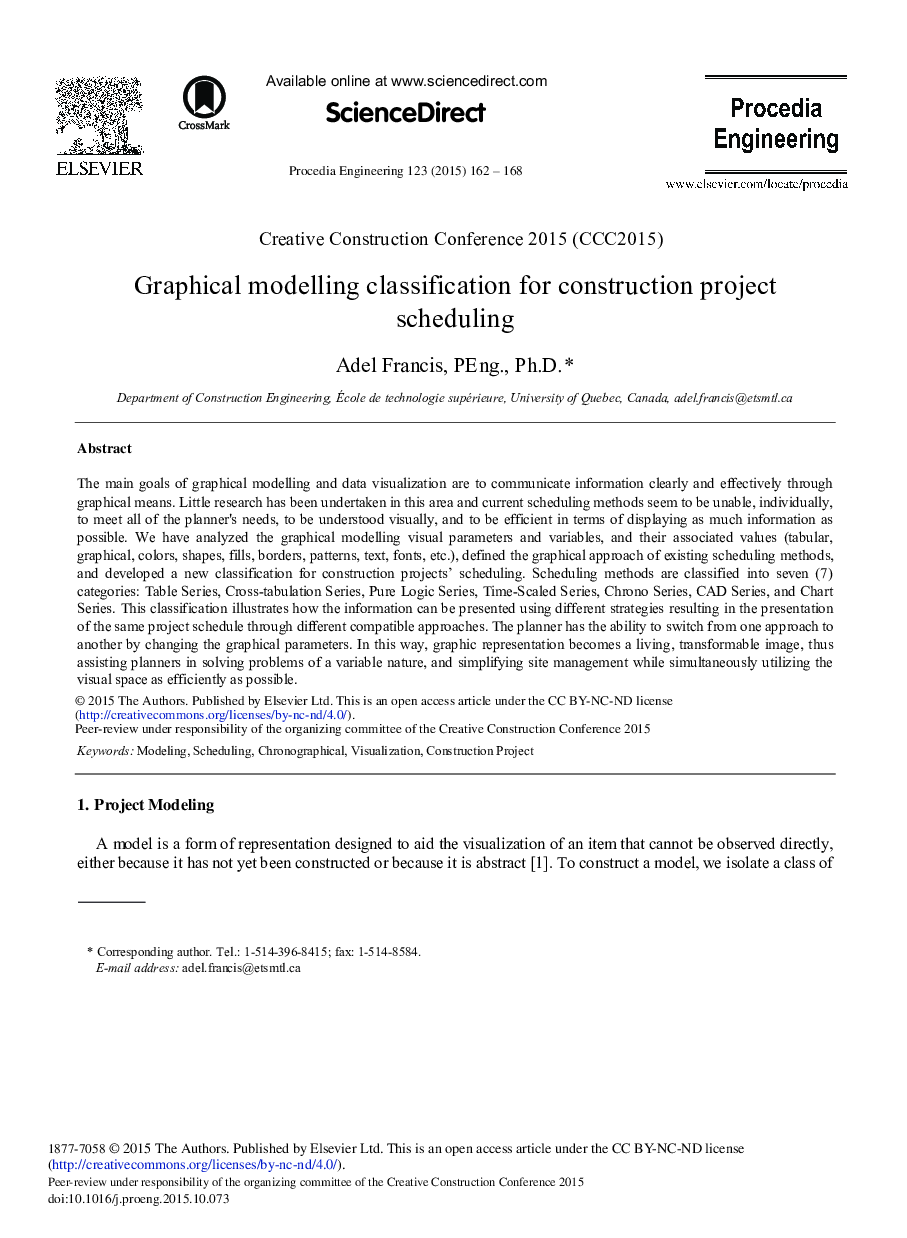| Article ID | Journal | Published Year | Pages | File Type |
|---|---|---|---|---|
| 854969 | Procedia Engineering | 2015 | 7 Pages |
The main goals of graphical modelling and data visualization are to communicate information clearly and effectively through graphical means. Little research has been undertaken in this area and current scheduling methods seem to be unable, individually, to meet all of the planner's needs, to be understood visually, and to be efficient in terms of displaying as much information as possible. We have analyzed the graphical modelling visual parameters and variables, and their associated values (tabular, graphical, colors, shapes, fills, borders, patterns, text, fonts, etc.), defined the graphical approach of existing scheduling methods, and developed a new classification for construction projects’ scheduling. Scheduling methods are classified into seven (7) categories: Table Series, Cross-tabulation Series, Pure Logic Series, Time-Scaled Series, Chrono Series, CAD Series, and Chart Series. This classification illustrates how the information can be presented using different strategies resulting in the presentation of the same project schedule through different compatible approaches. The planner has the ability to switch from one approach to another by changing the graphical parameters. In this way, graphic representation becomes a living, transformable image, thus assisting planners in solving problems of a variable nature, and simplifying site management while simultaneously utilizing the visual space as efficiently as possible.
